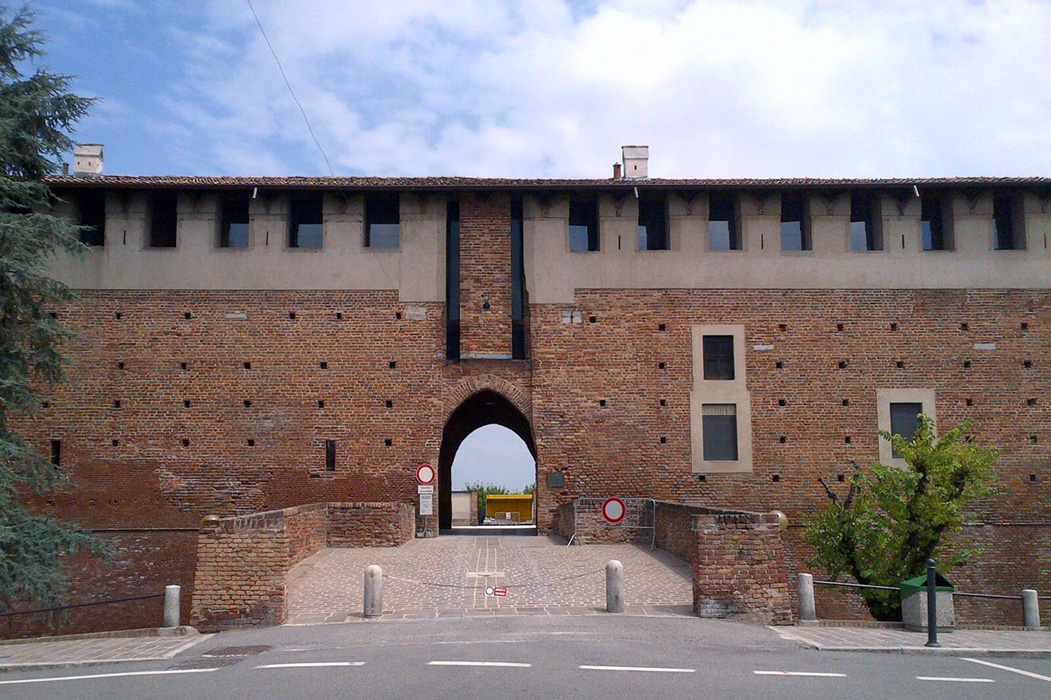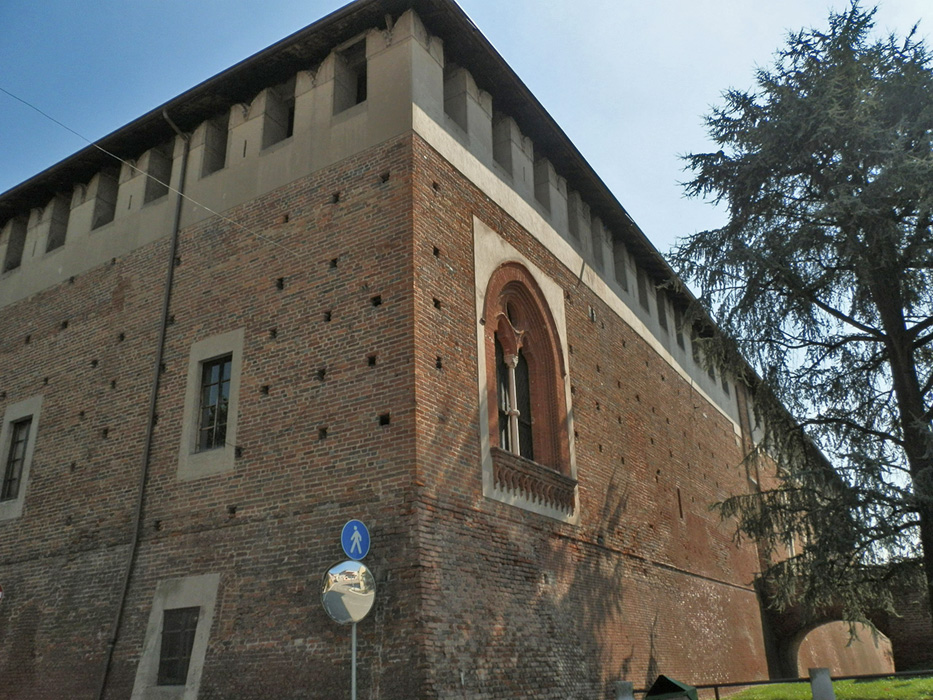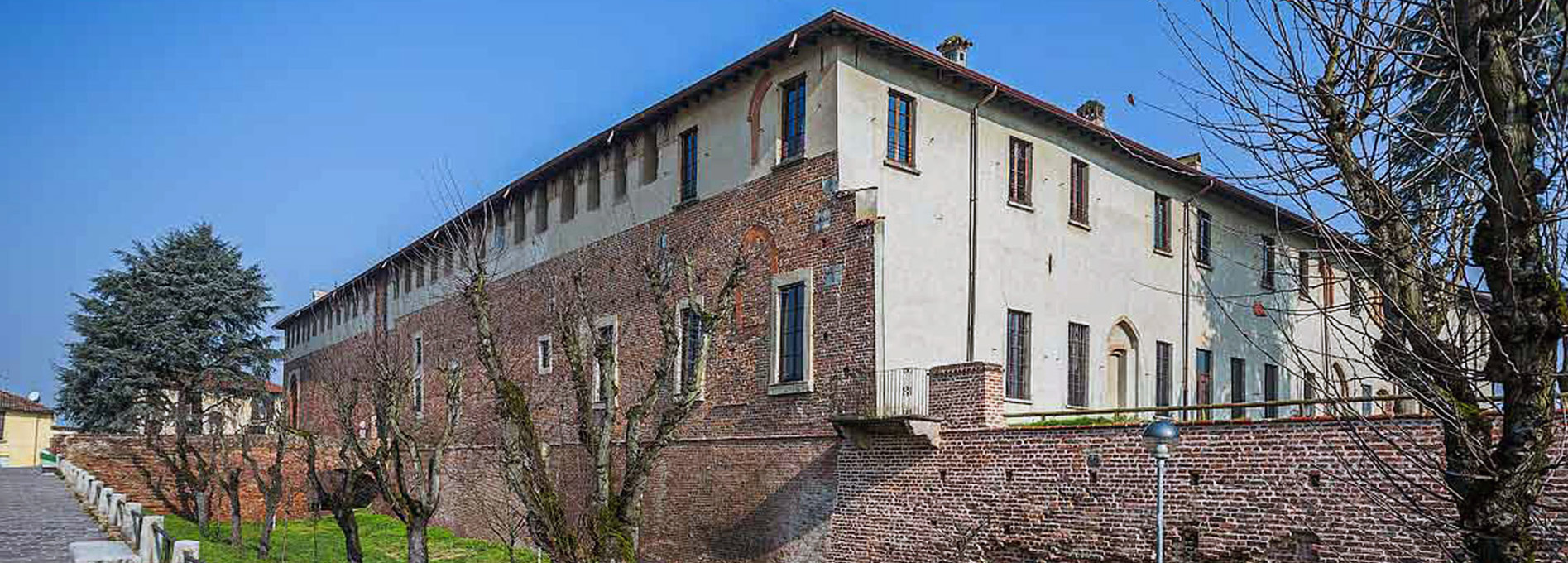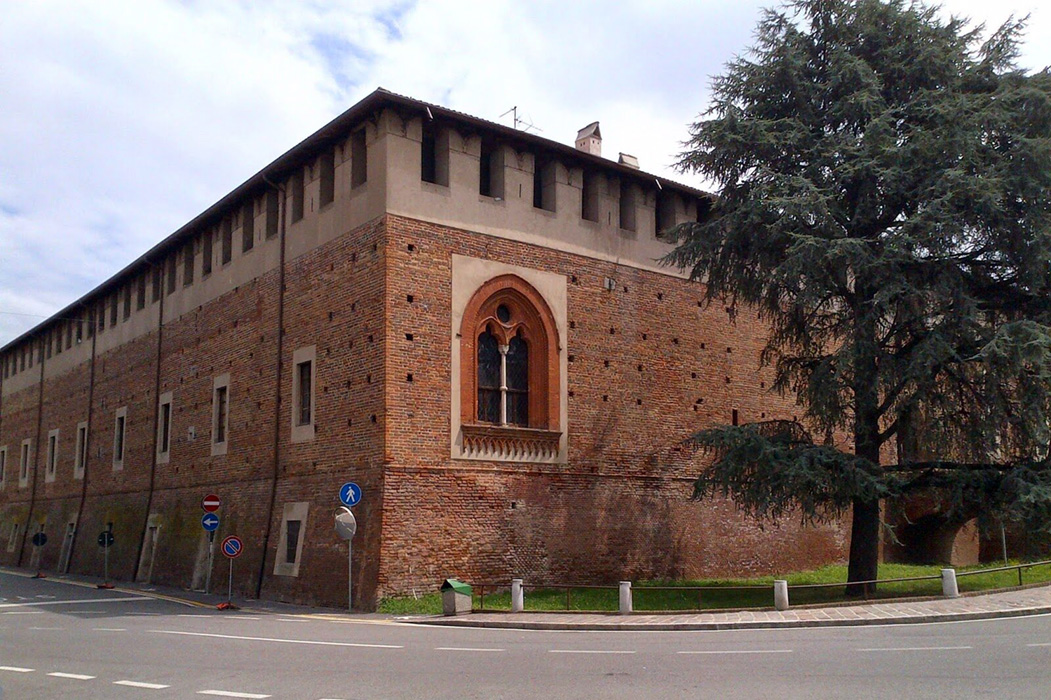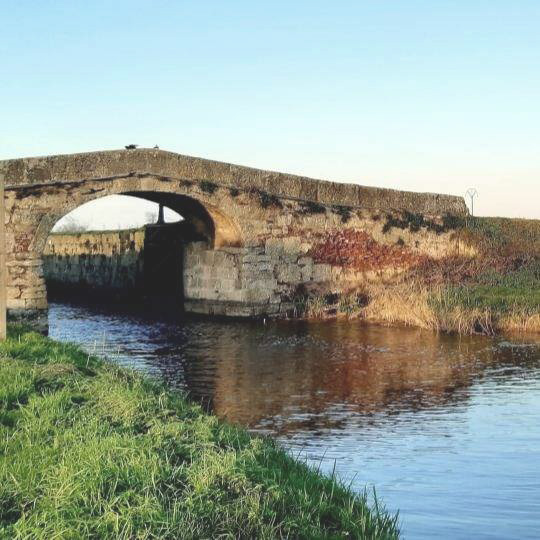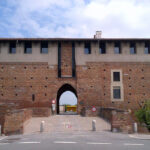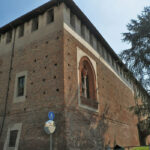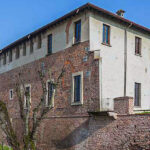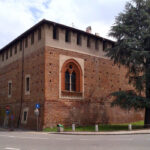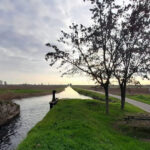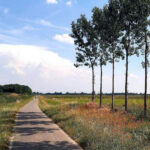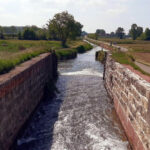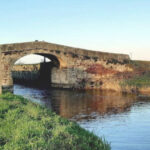Visconti Castle and Naviglio of Bereguardo
The castle, also known as Visconti Castle of Bereguardo, was built in the first half of the 14th century on the commission of Luchino Visconti to defend the western borders of Milan. It was also used as a winter residence and hunting lodge by Galeazzo II Visconti.
In the 15th century, some renovation work was carried out by Filippo Maria Visconti, who also built the Naviglio di Bereguardo, a canal connecting to the Naviglio Grande.
Duke Francesco Sforza granted the castle to the then lord of Bereguardo, Giovanni Maruzzi da Tolentino, captain and advisor to the duke. The castle remained in the possession of this family until the 18th century, after which it passed through various owners and was eventually donated to the municipality by engineer Giulio Pisa in 1897. It currently houses the town hall and the municipal library.
Originally, the castle was a closed square on four sides with brick buildings, but the northern wing was demolished. The southern end retains a drawbridge with a moat and shows the original battlements. The eastern end has a Gothic-style double window; made of terracotta, it dates back to the mid-15th century. The castle has largely lost its walls, and the interior has been heavily modified.
The Naviglio di Bereguardo is one of the artificial canals originally intended for inland navigation that were excavated between the late Middle Ages and the 19th century in the Milan area. In particular, the Naviglio di Bereguardo, started in 1420, was largely built between 1457 and 1470 by order of Francesco I Sforza, Duke of Milan. It branches off from the Naviglio Grande in Castelletto di Abbiategrasso and heads south, reaching the Ticino River, where it flows into the Bereguardo bridge after about 19 km. It has a drop of about 24 meters, which is overcome with 12 locks. It replaced the canal built by Gian Galeazzo Visconti and until 1819 was the only connection between Milan and the sea, crucial especially for the transport of salt.
Goods that were destined for Milan from the Po, traveling up the Ticino in its first section, had to be transferred by land from Pavia to this canal, through which they reached the Naviglio Grande and then the city. Sometimes the boats themselves were pulled, with all their cargo, to be put into the Naviglio from Bereguardo.
The canal declined in the early 19th century when the direct connection of Milan with the Ticino was completed with the Naviglio Pavese, a short distance from its confluence with the Po. Boaters, mule drivers, and traders quickly abandoned that inconvenient situation, moving to Pavia. Deprived of traffic, the canal was downgraded and still functions as an irrigation canal today. The old locks still survive in excellent condition, with the masonry parts and the floorings testifying to the great skill of the engineers and craftsmen who, three and a half centuries ago, created the work.
At Cascina Conca, between Morimondo and Motta Visconti, the lock even retains the downstream gate, used over time as a lock to regulate the flow of water.
After the bend of Castelletto di Abbiategrasso, the route is virtually straight in a southerly direction and stays away from major roads, crossing an extraordinarily lush agricultural landscape, accompanied by an easy, fully asphalted bicycle path, with no difficulty except for the lack of shelters between the carriageway and the water.
The entire route is within the Ticino Park and is not accessible to motorized vehicles, except for a very short intermediate stretch.

